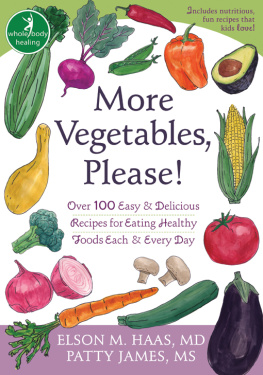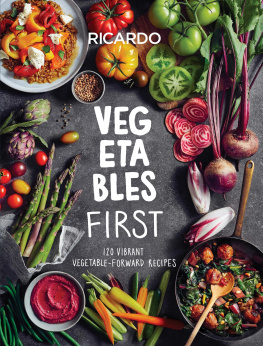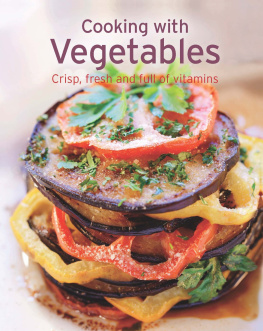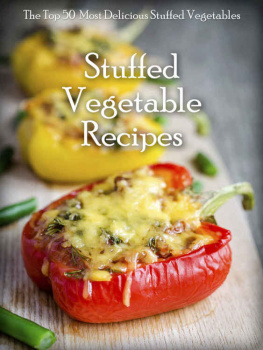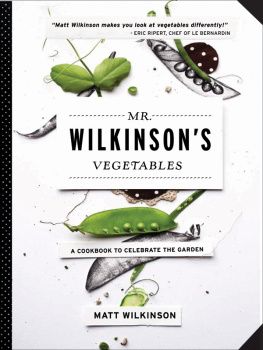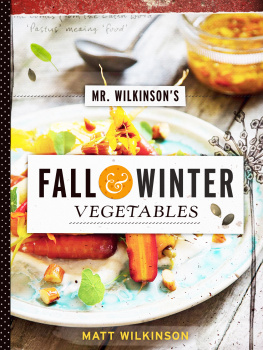
MR.
WILKINSONS
SPRING AND SUMMER
VEGETABLES
A COOKBOOK TO CELEBRATE THE GARDEN
MATT WILKINSON

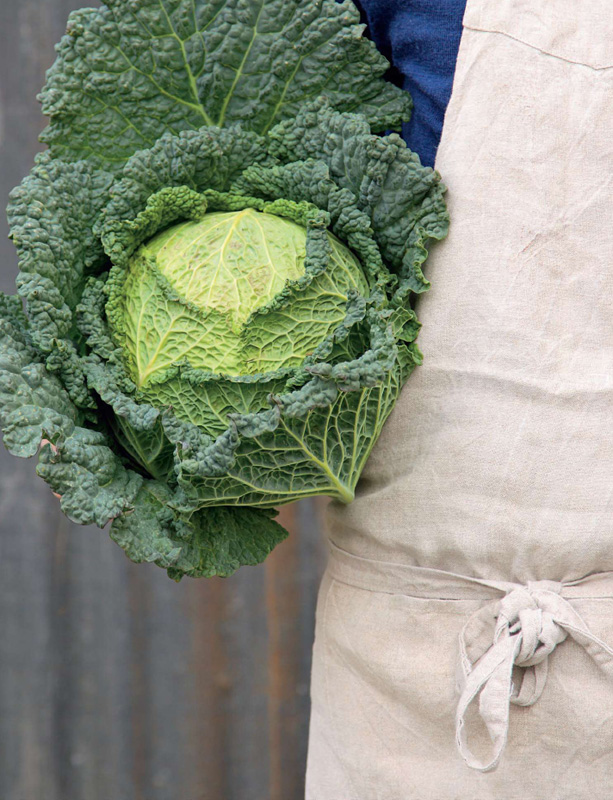
CONTENTS
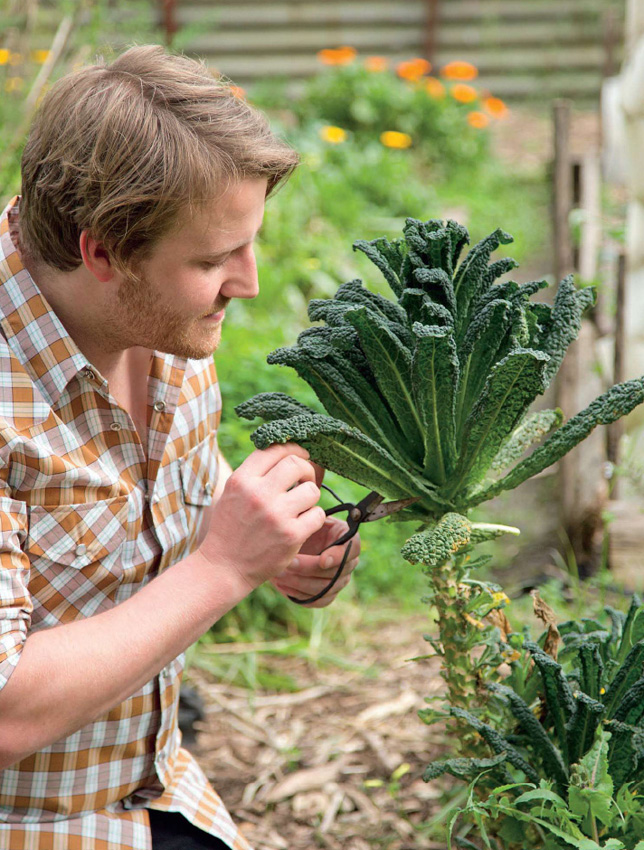

(ASPARAGUS OFFICINALIS)
ASPARAGUS
I may harp on a lot about eating vegetables only when they are in season but honestly, wherever you are in the world, is there really any other vegetable that you would live without for a whole year, just waiting for the next brief season, except the beautiful asparagus?
RECIPES
THE CROWN JEWEL
Growing up in England, I remember eating asparagus when I was younger, but it wasnt until I moved to Scotland and started my career working for Martin Wishart that I realized how stunning fresh asparagus truly is, and I began to fully appreciate the luxury of it. It was almost a truffle moment for methat amazing indescribable sensation when you smell and taste a real truffle for the first time. It was just like that when the first boxes of asparagus would arrive. The Scottish season was so fleetingonly a few weeksbut what it left me with was a deep appreciation for seasonality and why asparagus is so worth waiting for. Those few weeks were just wonderful.
And thats where the interesting point lies: its so amazing in season, but so terrible out of season. Its woody, tasteless, limp and, on top of all that, bloody expensive! So why buy it? Why buy asparagus imported from Thailand? Why import it at all? Do we really need to be able to buy asparagus year round from the supermarket? I understand that people dont want to go through half the year without, say, the tomato, but asparagus? If youre just using it because you have a recipe book that says use asparagus, well, how about choosing a different recipe instead?
Surely we can wait? The flavor, the anticipation, the beautiful snap of the stalk when ripe, the crunch of it raw in a salad or delicately, respectfully cooked. Let asparagus be the crown jewel (fittingly its got a lovely crown hat) of vegetables that you will wait just for spring to come around again so you can enjoy it.
The tip of the spear, if left to grow, will become a flowerjust like the globe artichoke. It is a member of the lily family (and therefore related to the likes of onion, leek and garlic) and, though it originated in the Mediterranean, it has been naturalized all over the world. It grows wild in the salt marshes of Europe and Asia, but it was the Romans who first cultivated and domesticated it. It has always been considered the height of elegance and a favorite of kings and emperors. The Egyptians even gave bundles of it as offerings to their gods. It has been respected for its beauty and elegance for thousands of years, and I think we need to continue showing it that respect.
PREPARING AND COOKING
The asparagus season begins in early spring, and, if conditions are favorable, will continue through to early summer. Early in the season, you should be able to eat it just as it is. When its young and fresh, you can eat it raw and it makes a lovely crudit, which works perfectly with bagna cuda. But, as the season goes on, you should peel the stalk as the skin can become quite fibrous. You should also cut or snap off about 1 inch from the base of the stalk as it is quite woody and makes for unpleasant eating, By doing this you also have an indicator as to how fresh the asparagus is; if fresh, you should get a lovely snap when you break it. Listen for it. And if you think that all this peeling and trimming is wasteful, then think again. Asparagus is really quite an amazing vegetableyou can use all of it. The peelings and stalk remnants can be used to make a soup or pure, and the rest can be boiled, broil, stir-fried, steamed, baked, broiled, or any other way you can think of.
WHITE VERSUS GREEN
Now, I have never grown asparagus, and the reason for that is it takes such a long time from sowing to harvest. If you grow from seed, it will take three years before you get a crop. To fast-track the situation somewhat, you can buy one-year-old plants, called crowns, from your nursery, which will reduce the growing time. I have been lucky enough, though, to be invited by Jo and Trevor Courtney to their property, organic Bridge Farm, near Koo Wee Rup, to see how they grow their asparagus. And it is a truly beautiful sight to see, the elegant stalks lined up in rows. The fern of the plant is almost prehistoric looking like some sort of bracken.
The Courtneys explained to me some of the many ways to grow white asparagus, which is exactly the same plant as green but has been grown under different conditionsit is starved of sunlight so that the chlorophyll within the plant (the chemical which makes it green) cant develop. This can be done by covering the emerging crowns with soil or, as some other farmers do, with black plastic to stop the sun reaching the plants. There is an ongoing argument with chefs and growers the world over as to which, out of the green or white, is a better product, with many saying that the white has a sweeter and more delicate flavor. But its really up to you which one you prefer. Try them both and make up your mind.
TAKE A CHANCE
And the topic you thought I might not touch on. Will eating asparagus make your wee smell or not? Scientists arent sure what the compound is in asparagus that can make some peoples urine smell. It appears to be a genetic thing as to whether it affects you or even whether you can smell it if it does. Only around 50 per cent of the population can I say, Who cares? For something this delicious, its worth taking the chance!

BLANCHED WHITE ASPARAGUS WITH RICOTTA & BELGIAN ENDIVE
SERVES 2 AS AN ENTRE
If you do not have any almond and orange spiced crumb on hand, you can substitute crotons. This salad works beautifully with some sliced charcuterie meat too.
1 LARGE BUNCH THICK-STEMMED WHITE ASPARAGUS (OR 2 BUNCHES THIN-STEMMED)
TEASPOON DIJON MUSTARD
CUP EXTRA VIRGIN OLIVE OIL
SEA SALT AND FRESHLY GROUND BLACK PEPPER
SMALL HEAD RADICCHIO, LEAVES SEPARATED, WASHED AND TORN
1 RED BELGIAN ENDIVE, LEAVES SEPARATED AND WASHED
1 CUP ARUGULA, WASHED AND SPUN DRY
CUP FRESH RICOTTA
1 QUANTITY ALMOND AND ORANGE SPICED CRUMB ()
Snap off the bottom part of the stalk of the asparagus. Slice a little of one stem and eat to see if the asparagus is stringy in texture. If it is, peel the skin with a vegetable peeler starting from the crown down to the base of the stem. If it isnt, leave her well alone. Halve the asparagus widthways.
Cook the asparagus for 13 minutes, depending on the size, in a saucepan of salted boiling water until still a little firm. Drain and plunge into a bowl of icy cold water. Once cold, remove immediately from the water and put into a bowl.
Whisk together the mustard and olive oil and season with salt and pepper. Pour over the asparagus and mix until well coated.
Next page








